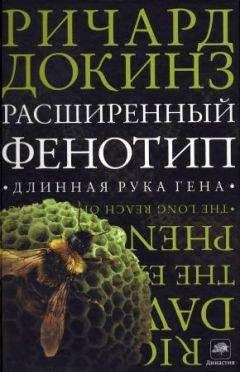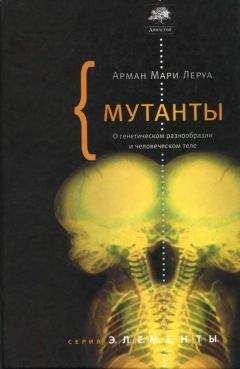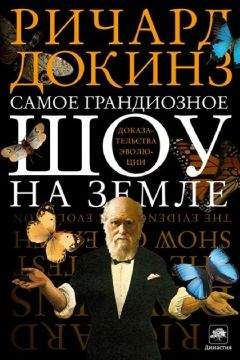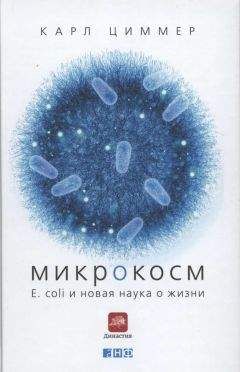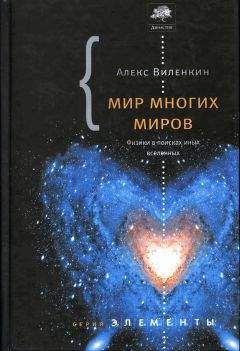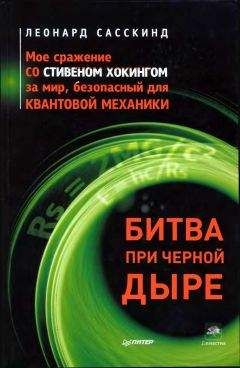Ознакомительная версия.
Bertram, В. C. E. (1978). Pride of Lions. London: Dent.
Bethel, W. M. & Holmes, J. C. (1973). Altered evasive behavior and responses to light in amphlpods harboring acanthocephalan cystacaeths. Journal of Parasitology.
Bethel, W. M. & Holmes, J. C. (1977). Increased vulnerability of amphipods to predation owing to altered behavior induced by larval acantho-cephalans. Canadian Journal of Zoology 55,110–115.
Bethell, T. (1978). Burning Darwin to save Marx. Harpers 257 (Dec), 31–38 & 91–92.
Bishop, D. T. & Cannings, C. (1978). A generalized war of attrition. Journal of Theoretical Biology 70, 85-124.
Blick, J. (1977). Selection for traits which lower individual reproduction. Journal of Theoretical Biology 67, 597–601.
Boden, M. (1977). Artificial Intelligence and Natural Man. Brighton: Harvester Press.
Bodmer, W. F. & Cavalli-Sforza, L. L. (1976). Genetics, Evolution, and Man. San Francisco: Ж. H. Freeman.
Bonner, J. T. (1958). The Evolution of Development. Cambridge: Cambridge University Press.
Bonner, J. T. (1974). On Development. Cambridge, Mass.: Harvard University Press.
Bonner, J. T. (1980). The Evolution of Culture in Animals. Princeton, N.J.: Princeton University Press.
Boorman S. A. & Levitt, P. R. (1980). The Genetics of Altruism. New York: Academic Press.
Brenner, S. (1974). The genetics of Caenorhabditis elegans. Genetics 77, 71–94. Brent, L., Rayieid, L. S., Chandler, R, Fierz, W., Medawar, R B. & Simpson, E. (1981). Supposed lamarckian inheritance of immunological tolerance. Nature 290, 508–512.
В ROC km ANN, H. J. (1980). Diversity in the nesting behavior of mud-daubers (Trypoxylon fioliium Say; Sphecidae). Florida Entomologist 63, 53–64. Brockmann, H. J. & Dawkins, R. (1979). Joint nesting in a digger wasp as an evolutionarlly stable preadaptation to social life. Behaviour, 71, 203–245. Brockmann, H. J., Grafen, A. & Dawkins, R. (1979)- Evolutionary stable nesting strategy in a digger wasp. Journal of Theoretical Biology, 77, 473–496.
Broda, P. (1979). Plasmids. Oxford: W H. Freeman.
Brown, J. L. (1975). The Evolution of Behavior. New York: W W Norton. Brown, J. L. & Brown, E. R. (1981). Extended family system in a communal bird. Science 211, 959–960.
Bruinsma, O. & Leuthold, R. H. (1977). Pheromones involved in the building behaviour of Macro'termes subhyalinus (Rambur). Proceedings of the Sth International Congress of the International Union for the Study of Social Insects, Wageningen, 257–258.
Burnet, F. M. (1969). Cellular Immunology. Melbourne: Melbourne University Press.
Bygott, J. D., Bertram, B. C. E. & Hanby, J. P. (1979)- Male lions in large coalitions gain reproductive advantages. Nature 282, 839–841.
Cain, A. J. (1964). The perfection of animals. In Viewpoints in Biology, 3 (eds J. D. Carthy & C. L. Duddington), p. 36–63. London: Butter-worths.
Cain, A. J. (1979). Introduction to general discussion. In The Evolution of Adaptation by Natural Selection (eds J. Maynard Smith & R. Holliday) . Proceedings of the Royal Society of London, В 205,599–604. Cairns, J. (1975). Mutation selection and the natural selection of cancer. Nature 255,197–200.
Cannon, H. G. (1959). Lamarck and Modern Genetics. Manchester: Manchester University Press.
Caryl, P. G. (1982). Animal signals: a reply to Hinde. Animal Behaviour 30, 240–244.
Cassidy, J. (1978). Philosophical aspects of the group selection controversy. Philosophy of Science 45, 575–594.
Cavalier-Smith, T. (1978). Nuclear volume control by nucleoskeletal DNA, selection for cell volume and cell growth rate, and the solution of the DNA С-value paradox. Journal of Cell Science 34, 247–278.
Cavalier-Smith, T. (1980). How selfish is DNA? Nature 285, 617–618.
Cavalli-Sforza, L. & Feldman, M. (1973). Cultural versus biological inheritance: phenotypic transmission from parents to children. Human Genetics 25, 618–637.
Cavalli-Sforza, L. & Feldman, M. (1981). Cultural Transmission and Evolution. Princeton, N.J.: Princeton University Press.
Charlesworth, В. (1979). Evidence against Fisher’s theory of dominance. Nature 278, 848–849.
Charnov, E. L. (1977). An elementary treatment of the genetical theory of kin-selection. Journal of Theoretical Biology 66, 541–550.
Charnov, E. L. (1978). Evolution of eusocial behavior: offspring choice or parental parasitism? Journal of Theoretical Biology 75, 451–465.
Cheng, Т. C. (1973). General Parasitology. New York: Academic Press. Clarke, В. C. (1979). The evolution of genetic diversity. Proceedings of the Royal Society of London, В 205, 453–474.
Clegg, М. T. (1978). Dynamics of correlated genetic systems. II. Simulation studies of chromosomal segments under selection. Theoretical Population Biology 3,1-23.
Cloak, F. T. (1975). Is a cultural ethology possible? Human Ecology 3,161–182. Clutton-Brock, Т. H. & Harvey, P. H. (1979). Comparison and adaptation. Proceedings of the Royal Society of London, В 205, 547–565. Clutton-Brock, Т. H., Guinness, F. E. & Albon, S. D. (1982). Red Deer: The Ecology of Two Sexes. Chicago: Chicago University Press.
Cohen, J. (1977). Reproduction. London: Butterworths.
Cohen, S. N. (1976). Transposable genetic elements and plasmid evolution. Nature 263, 731–738. {272}
Cosmides, L. M. & Tooby, J. (1981). Gytoplasmlc inheritance and intrage-nomic conflict. Journal of Theoretical Biology 89, 83-129.
Craig, R. (1980). Sex Investment ratios in social Hymenoptera. American Naturalist 116, 311–323.
Crick, F. H. C. (1979). Split genes and RNA splicing. Science 204, 264–271. Croll, N. A. (1966). Ecology of Parasites. Cambridge, Mass.: Harvard University Press.
Crow, J. F. (1979). Genes that violate Mendel’s rules. Scientific American 240 (2), 104–113.
Crowden, A. E. & Broom, D. M. (1980). Effects of the eyeiuke, Diploslomum spathocaeum, on the behaviour of dace (Leuciscus leucis-cus). Animal Behaviour 28, 287–294.
Crozier, R. H. (1970). Coefficients of relationship and the identity by descent of genes in Hymenoptera. American Naturalist 104, 216–217.
Curio, E. (1973). Towards a methodology of teleonomy. Expenentia 29, 1045–1058.
Daly, М. (1979). Why don’t male mammals lactate? Journal of Theoretical Biology 78, 325–345.
Daly, M. (1980). Contentious genes. Journal of Social and Biological Structures 3, 77–81.
Darwin, C. R. (1859). The Origin of Species, ist edn, reprinted 1968. Harmonds worth, Middx: Penguin.
Darwin, C. R. (1866). Letter to A. R. Wallace, dated 5 July. In James Marchant (1916), Alfred Mussel Wallace Letters and Reminiscences, Vol. 1, p. 174–176. London; Cassell.
Davies, N. B. (1982). Alternative strategies and competition for scarce resources. In Current problems in sociohiology (ed. King’s College Sociobiology Group), pp. 363–380. Cambridge: Cambridge University Press.
Dawkins, R. (1968). The ontogeny of a pecking preference in domestic chicks. Zeitschrift fur Tierpsychologie 25,170–186.
Dawkins, R. (1969). Bees are easily distracted. Science 165, 751.
Dawkins, R. (1971). Selective neurone death as a possible memory mechanism. Nature 229,118–119.
Dawkins, R. (1976a). The Selfish Gene. Oxford: Oxford University Press. Dawkins, R. (1976b). Hierarchical organisation: a candidate principle for ethology. In Growing Points in Ethology (eds P. P. G. Bateson & R. A. Hinde), p. 7-54. Cambridge: Cambridge University Press.
Dawkins, R. (1978a). Replicator selection and the extended phenotype. Zeitschrift fur Tierpsychologie 47, 61–76.
Dawkins, R. (1978b). What is the optimon? University of Washington, Seattle, Jessie & John Danz Lecture, unpublished.
Dawkins, R. (1979a). Twelve misunderstandings of kin selection. Zeitschnft fur Tierpsychologie 51, 184–200.
Dawkins, R. (1979b). Defining sociobiology. Nature 280, 427–428. Dawkins, R. (1980). Good strategy or evolutionarily stable strategy? In Sociohiology: Beyond Nature/Nurture? (eds G. W. Barlow & J. Silverberg), p. 331–367. Boulder: Westview Press.
Dawkins, R. (1981). In defence of selfish genes. Philosophy 56(218), 556–573. Dawkins, R. (1982). Replicators and vehicles. In Current Problems in Sociohiology (ed. King’s College Sociobiology Group), pp. 45–64; Cambridge: Cambridge University Press
Dawkins, R. & Brockmann, H. J. (1980). Do digger wasps commit the Concorde fallacy? Animal Behaviour 28, 892–896.
Dawkins, R. & Carlisle, T. R. (1976). Parental investment, mate desertion and a fallacy. Nature 262,131–133.
Dawkins, R. & Dawkins, M. (1973). Decisions and the uncertainty of behaviour. Behaviour 45, 83-103.
Dawkins, R. & Krebs, J. R. (1978). Animal signals: information or manipulation? In Behavioural Ecology (eds J. R. Krebs & N. B. Davies), pp. 282–309. Oxford: Blackwell Scientific Publications.
Dawkins, R. & Krebs, J. R. (1979). Arms races between and within species. Proceedings of the Royal Society of London, В 205, 489–511.
Dilger, W. C. (1962). The behavior of lovebirds. Scientific American 206 (1), 89–98.
Doolittle, W. F. & Sapienza, C. (1980). Selfish genes, the phenotype paradigm and genome evolution. Nature 284, 601–603.
Dover, G. (1980). Ignorant DNA? Nature 285, 618–619.
Eaton, R. L. (1978). Why some felids copulate so much: a model for the evolution of copulation frequency. Carnivore 1, 42–51.
Eberhard, W. G. (1980). Evolutionary consequences of intracellular organelle competition. Quarterly Review of Biology 55, 231–249.
Eldredge, N. & Cracraft, J. (1980). Phylogenetic Patterns and the Evolutionary Process. New York: Columbia University Press.
Eldredge, N. & Gould, S. J. (1972). Punctuated equilibria: an alternative to phyletic gradualism, in Models in Paleobiology (ed. T. J. M. Schopf), pp. 82-115. San Francisco: Freeman Cooper.
Emerson, A. E. (i960). The evolution of adaptation in population systems. In Evolution after Darwin (ed. S. Tax), pp. 307–348. Chicago: Chicago University Press.
Evans, C. (1979). The Mighty Micro. London: Gollancz.
Ewald, P. W. (1980). Evolutionary biology and the treatment of signs and symptomsof infectious disease. Journal of Theoretical Biology 86,169–171.
Falconer, D. S. (i960). Introduction to Quantitative Genetics. London: Longman.
Fisher, R. A. (1930a). The Genetical Theory of Natural Selection. Oxford: Clarendon Press.
Fisher, R. A. (1930b). The distribution of gene ratios for rare mutations. Proceedings of the Royal Society of Edinburgh 50, 204–219.
Fisher, R. A. & Ford, E. B. (1950). The Sewall Wright effect. Heredity 4, 47–49Ford, E. B. (1975). Ecological Genetics. London: Chapman and Hall. Fraenkel, G. S. & Gunn, D. L. (1940). The Orientation of
Ознакомительная версия.
